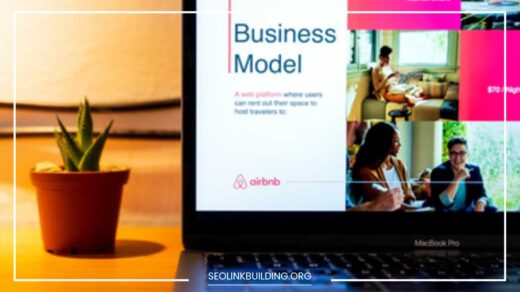SEO and Business Blogging

SEO and Business Blogging: A Match Made in Marketing Heaven
In today’s digital age, a robust online presence isn’t a luxury – it’s a survival tactic. Businesses that fail to establish themselves in the vast online landscape struggle to compete. But fear not! A strategically crafted blog can be your game-changer.
Here’s where the magic happens: the beautiful union of SEO (Search Engine Optimization) and business blogging.
This comprehensive guide delves deep into the powerful synergy between SEO and business blogging. We’ll equip you with the knowledge to create content that not only attracts and engages your audience but also propels you to the top of search engine rankings.
Demystifying SEO: The Engine Behind Search
Imagine millions of webpages vying for a coveted spot on search engine result pages (SERPs). SEO is the art and science of optimizing your website and content to rank higher in these results. When someone searches for a term related to your industry, strong SEO ensures your website appears at the forefront.
Here’s a breakdown of the key pillars of SEO:
- Keywords: These are the search terms people use to find information online. Identifying relevant keywords with high search volume and low competition is crucial for attracting the right audience.
- On-page Optimization: Optimizing individual web pages for target keywords involves incorporating them strategically within the content, title tags, meta descriptions, image alt text, and even URLs.
- Content Quality: Search engines prioritize high-quality content that’s informative, engaging, and provides value to users. Content that surpasses user expectations and establishes expertise is king.
- Backlinks: Think of backlinks as votes of confidence. Links from high-authority websites to your content signal to search engines that your website is credible and trustworthy. This in turn boosts your SEO score.
Why Business Blogging is Your Content Marketing Powerhouse
Business blogging offers a unique platform to showcase your expertise, build trust with your audience, and ultimately drive conversions. Here’s how:
- Thought Leadership: Consistent blogging establishes you as a thought leader in your industry. By sharing valuable insights, industry trends, and unique perspectives, you position yourself as a reliable source of information.
- Brand Awareness: Blogging increases brand visibility by reaching a wider audience. With each informative post, you’re building brand recognition and attracting potential customers who may not have been aware of your business before.
- Lead Generation: Blogs can be powerful lead generation tools. By offering gated content such as ebooks, whitepapers, or exclusive resources in exchange for contact information, you’re building an email list and nurturing leads down the sales funnel.
- Customer Engagement: Interactive blog posts that encourage comments, discussions, and Q&A sessions foster a sense of community around your brand. This two-way communication strengthens customer relationships and builds brand loyalty.
- Long-Term Value: High-quality evergreen content has a long shelf life. Informative content that remains relevant over time continues to attract readers, generate leads, and establish your brand as a trusted authority in your field.
The SEO and Business Blogging Match: A Perfect Synergy
Now, let’s explore how SEO and business blogging work together to create a winning content marketing strategy:
- Keyword Targeting: Blog posts become prime targets for keyword optimization. By incorporating relevant keywords naturally throughout your content, you increase your website’s ranking potential for those search terms. This doesn’t mean keyword stuffing, though! Focus on creating content that reads naturally and provides value, while strategically using keywords to signal relevance to search engines.
- Fresh Content: Search engines favor websites with fresh, up-to-date content. Regularly published blog posts signal activity and keep your website relevant, improving its SEO performance. Aim for a consistent publishing schedule to establish yourself as a reliable source of information.
- Backlink Opportunities: Valuable and informative blog content naturally attracts backlinks from other websites and industry publications. These backlinks act as powerful SEO boosters, as they indicate the credibility and trustworthiness of your content.
- Targeted Traffic: Blogs attract qualified traffic – people actively searching for information related to the products or services you offer. This targeted audience is more likely to convert into leads and customers because they already have a demonstrated interest in your niche.
- Content Promotion: Leverage the power of social media and email marketing to promote your blog posts. This increases brand awareness, drives qualified traffic back to your website, and strengthens SEO through social signals sent to search engines.
Crafting SEO-Friendly Blog Content: A Step-by-Step Guide
Here’s a practical roadmap to create SEO-friendly blog content that resonates with both readers and search engines:
- Keyword Research: Conduct thorough keyword research to identify relevant terms with high search volume and low competition. Tools like Google Keyword Planner, SEMrush, and Ahref are excellent resources for keyword research. Look for keywords with a healthy balance of search volume and competition. Targeting long-tail keywords (more specific keyword phrases) can be a great strategy to attract targeted traffic while avoiding high competition on broad keywords.
- Content Planning: Focus on creating valuable, informative content that addresses your target audience’s needs and interests. Align your blog topics with your business goals. Brainstorm content ideas that answer common customer questions, address industry pain points, or showcase your expertise in a unique way.
Here are some additional content planning tips:
- Content Calendar: Develop a content calendar to plan and schedule your blog posts. This ensures consistent publishing and helps maintain a steady flow of fresh content.
- Content Clusters: Create content clusters that group related blog posts around a central theme. This helps establish topical authority and improves user experience by allowing readers to delve deeper into specific topics.
- Competitor Analysis: Research your competitors’ content strategy. Analyze what topics they’re covering and identify potential gaps you can fill with unique and valuable content.
-
On-page Optimization: Once you’ve chosen your target keyword, optimize your blog post by incorporating it naturally in the following elements:
- Title Tag: The title tag is the headline displayed in search engine results. It should be clear, concise, and include your target keyword. Aim for a title tag length between 50-60 characters to ensure it’s fully displayed in search results.
- Meta Description: The meta description is a brief summary of your blog post content displayed below the title tag in search results. It should be compelling and encourage users to click on your post. Include your target keyword naturally within the meta description, ideally towards the beginning. Keep your meta description within 155-160 characters.
- Headings and Subheadings: Structure your content using clear headings (H1, H2, H3) and subheadings. Incorporate your target keyword naturally within your H2 headings for optimal SEO benefit.
- Body Content: Write high-quality, informative content that provides value to your readers. Aim for a conversational tone and avoid keyword stuffing. Use synonyms and related keywords throughout your content to demonstrate semantic relevance to search engines.
- Image Optimization: Include high-quality images relevant to your content. Optimize image file size for faster loading times. Use descriptive filenames and alt text that include your target keyword to improve image search visibility.
-
Content Quality: Prioritize high-quality writing. Ensure your blog posts are well-structured, grammatically sound, and engaging to read. Break up long text blocks with visuals, bullet points, and numbered lists to improve readability.
Here are some additional content quality tips:
- Target Readability: Aim for a writing style that aligns with your target audience’s reading level.
- Internal Linking: Link to relevant pages within your website to improve user experience and distribute SEO value across your content.
- Call to Action (CTA): End your blog posts with a clear call to action, encouraging readers to subscribe to your email list, download a resource, or contact you for further information.
- Proofreading and Editing: Proofread and edit your content meticulously before publishing to ensure it’s free of errors and delivers a professional image.
Beyond the Basics: Advanced SEO Techniques for Blog Content
While the strategies mentioned above provide a solid foundation, consider these advanced SEO techniques to further optimize your blog content:
- Structured Data Markup: Implement structured data markup to provide search engines with richer information about your content. This can improve the way your website is displayed in search results.
- Technical SEO: Ensure your website’s technical aspects are optimized for search engines, including fast loading speeds, mobile-friendliness, and a secure connection (HTTPS).
- Local SEO (if applicable): If you have a local business with a physical location, leverage local SEO techniques to target local searches. Claim your Google My Business listing and optimize your website content with local keywords.
- Content Analytics: Track your blog post performance using website analytics tools like Google Search Console. Analyze data such as organic traffic, keyword rankings, and user engagement to understand what’s working and identify areas for improvement.
Final Word: The SEO and Business Blogging Powerhouse
By harnessing the power of SEO and business blogging, you can create a winning content marketing strategy that attracts qualified traffic, establishes your brand as an industry leader, and ultimately drives conversions.
Remember, SEO is an ongoing process, so be patient, consistent, and data-driven in .your approach. Regularly create high-quality, SEO-friendly blog content, and watch your website climb the search engine rankings. Here are some additional thoughts to consider:
- Building Relationships: The blogging world thrives on collaboration. Network with other bloggers in your industry, guest post on their websites, and invite them to contribute content to yours. This strategy helps expand your reach, attract new audiences, and potentially earn valuable backlinks.
- Content Promotion Powerhouse: Don’t underestimate the power of content promotion. Utilize social media platforms like Twitter, LinkedIn, and Facebook to share your blog posts and engage with your audience. Paid advertising platforms can also be a strategic way to reach a wider audience and drive targeted traffic to your content.
- Staying Ahead of the Curve: The SEO landscape is constantly evolving. Stay updated on the latest SEO trends and best practices by following industry publications and attending relevant webinars or conferences.
The rewards of a well-executed SEO and business blogging strategy are substantial. By implementing the tips and techniques outlined above, you can transform your blog into a powerful lead generation machine, establish your brand as a thought leader, and achieve long-term success in the ever-competitive digital marketplace.
Bonus Tip: Consider creating a blog content library. This is a curated collection of your best blog posts categorized by topic or theme. A well-organized content library makes it easier for users to navigate your website and find the information they’re looking for, ultimately enhancing the user experience and potentially increasing conversions.
This comprehensive guide has equipped you with the knowledge and tools to create a winning SEO and business blogging strategy. Remember, consistency is key. Regularly publish high-quality content, actively promote your blog, and stay updated on SEO trends.
As you do, you’ll witness the transformative power of this dynamic duo in driving traffic, boosting brand awareness, and achieving your business goals.













